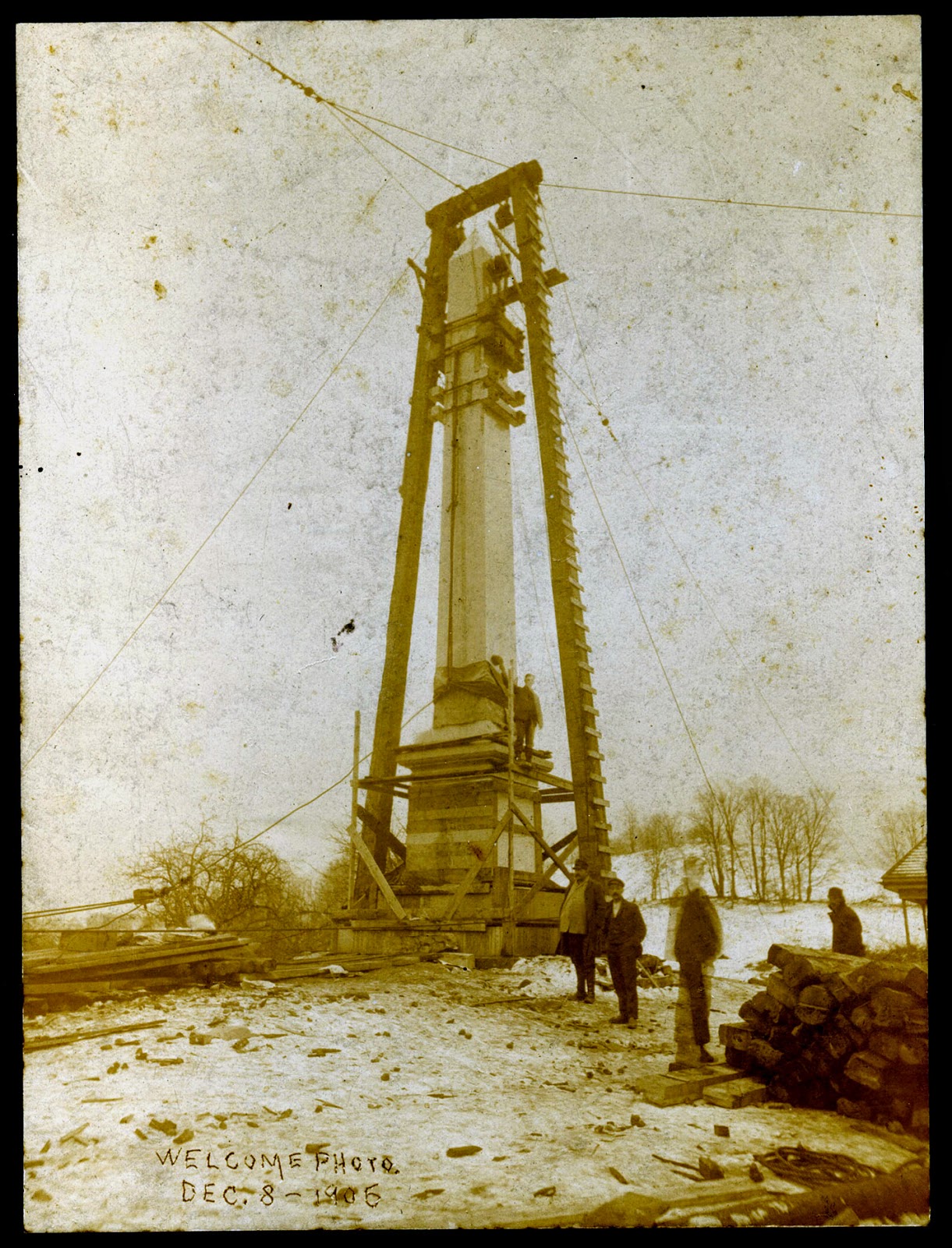I love this story:
In early 1905, Junius F. Wells was in Vermont, from Salt Lake City, seeking to purchase some granite for a monument to his father. While here he thought there should be a monument erected to mark Joseph Smith's birthplace. When he returned to Salt Lake he spoke with the First Presidency and obtained permission to come to Vermont and find the actual spot of Joseph's birth, purchase the land and arrange for a monument to be constructed before the 100 year commemoration of Joseph's birth on December 23, 1905. This was a huge undertaking.
He visited with local people that would remember the farm of Solomon Mack, where the Smith family had lived. He searched land records. In May of 1905 he purchased 68 acres of the original Solomon Mack farm and began to plan the construction of a monument.
The survey of the Birth site
He had learned previously that the granite quarry in Barre, Vermont, has some of the finest granite in the world. He felt this would be the ideal material for the monument. On July 24, 1905 the contract was made.
Wells determined that the shaft of the monument should be thirty-eight and a half feet high, a foot for every year of the Prophet's life.
A piece of granite was found that could be cut in a solid piece. It was formed, polished and the transport started. Barre is 35 miles from the birth site, so the monument would be transported by train to Royalton, Vermont. From there it would be transferred to the site on specially-built wagons.
The wagons were reinforced and had wheels twenty inches wide.
Moving the granite the five and a half miles from Royalton was complicated by it being November, and the road bed was very soft.
To help alleviate the problem the wagons drove over wooden planks which were continually moved from the back of the wagon to the front as the load was carried up Dairy Hill Road to the birth site.
They were worried about the Vermont winter playing a role in whether they would be able to get the monument to the site. Part way up the hill a mud hole, that was bad because of recent rain, completely blocked their path. An empty wagon coming down the mountain had become stuck in the muddy swamp, and it was apparent that there was no way to cross it with the heavy wagons. As Junius Wells was about to give in to the many obstacles he faced, he offered a fervent prayer. A north wind began to blow and a "Canadian Clipper" came through the area that night, dropping the temperature 35 degrees in three hours. The mud hole froze solid, and they were able to get the wagon over the muddy hole with little difficulty. The weather later warmed and allowed the concrete on which the monument sets to set up, and it wasn't cold for the rest of the project.
There were no huge cranes to place this monument, and yet it was done with skill and has stood the test of time. The shaft weighs 40 tons and the base weighs 60 tons. A great accomplishment for the time.
The monument was dedicated December 23, 1905 by Joseph F. Smith, prophet at the time and Joseph Smith's nephew.
There is a peaceful Spirit here. Everyone that comes can feel it. It is a sacred spot that is blessed by the Lord. I believe there are times when I can feel the angels close. I know more than ever before in my life that Joseph was the Lord's prophet, chosen before this world was created to bring forth His gospel to the earth for us in these latter days. I love Jesus Christ, he has blessed me richly.








Thank you for sharing this story. What amazing thing to know that the Heavens have power to create miracles that help preserve the history of our dear Prophet Joseph. I love him too and hopefully one day can meet him and account to him what I have done in building the Kingdom. Love you guys!!
ReplyDelete